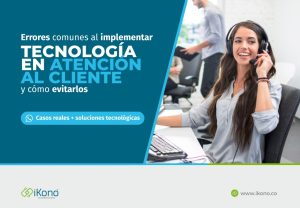How to integrate AI and your human talent?
![]()

Artificial intelligence (AI) is revolutionizing the business world, transforming the way organizations operate and redefining the role of human talent. Although AI's potential to automate tasks has been widely discussed, it is essential to understand that the true value of this technology lies in its ability to complement and enhance people, not replace them. In this article, we will explore how to effectively integrate AI with human talent to maximize organizational performance, improve decision-making, and foster a culture of innovation.
1. The current landscape of AI and human talent
The advancement of AI has led many to fear total automation, concerned about the possibility of jobs being replaced by machines. However, the reality is that AI, when implemented correctly, can free employees from repetitive, low-value tasks, allowing them to focus on strategic and creative work that requires human judgment.,
empathy and adaptability.
Leading companies across a variety of industries are already using AI to improve their operations. For example, in the financial sector, AI is used to analyze large volumes of data and detect patterns that humans might miss, while in marketing, it's used to personalize customer experiences on a massive scale. Despite these advances, the effective integration of AI with human talent is what truly distinguishes successful organizations.
2. Benefits of integrating AI and human talent
Bulk SMS campaigns are low-cost compared to other advertising methods, and because they are highly targeted, their return on investment (ROI) is significantly high.
a) Improving operational efficiency
AI can automate routine tasks such as data processing, inventory management, or initial customer service. This not only reduces the margin for error but also speeds up processes that would otherwise consume valuable employee time. By freeing up teams from these tasks, it creates space for them to focus on activities that truly add value, such as developing new strategies or improving products and/or services.
b) Informed decision-making
One of the biggest challenges in decision-making is the amount of information that must be processed to reach an informed conclusion. AI, with its ability to analyze large volumes of data in real time, can provide valuable insights that guide leaders in making strategic decisions. However, interpreting this data remains a quintessentially human task, requiring context, expertise, and a deep understanding of long-term implications.
c) Personalization and customer experience
In the digital age, customers expect personalized experiences and quick responses. AI can help meet these expectations by analyzing customer data and anticipating their needs before they express them. However, human interaction remains crucial for solving complex problems and providing a personal touch, especially in sensitive situations or when greater empathy is required.
d) Promotion of innovation
By combining human creativity with the analytical capabilities of AI, organizations can accelerate innovation. Employees can use AI to explore new ideas, validate hypotheses, and test concepts at a speed and scale that would be impossible without technology. This not only drives the development of innovative products and services but also strengthens the culture of innovation within the organization.

3. Strategies for effective integration
To successfully integrate AI and human talent, it is necessary to follow a series of strategies that ensure smooth and effective collaboration between the two:
a) Continuous training and education
It's critical that employees understand how AI works and how they can use it in their daily work. Ongoing training is essential for employees to acquire new skills and become comfortable working with AI tools. This includes not only the technical aspect but also the development of competencies such as data interpretation, change management, and decision-making based on AI-generated insights.
b) Promoting a collaborative culture
AI integration must be accompanied by an organizational culture that values collaboration between humans and machines. This involves promoting a teamwork mentality, where technology is seen as an ally, not a threat. Encouraging employee participation in the implementation and improvement of AI systems can help reduce resistance to change and ensure smoother adoption.
c) Redesign of roles and processes
The introduction of AI requires a redesign of roles and processes to maximize its effectiveness. This may involve creating new roles specialized in monitoring and improving AI systems, as well as reorganizing processes to integrate the technology more efficiently. It is important for organizations to continually assess how AI is impacting their operations and adjust their structures accordingly.
d) Ethical and responsible approach
AI implementation must also be guided by ethical and responsible principles. Organizations must be transparent about how AI is used, ensuring that systems are designed to be fair, inclusive, and respectful of privacy. Furthermore, it is crucial to establish oversight mechanisms to avoid bias and ensure that decisions made by AI are fair and equitable.
4. The future of collaboration between AI and humans
As AI continues to evolve, its integration with human talent is likely to become even deeper and more significant. Organizations that manage to balance the use of advanced technology with the unique value their employees bring will be better positioned to thrive in an increasingly competitive business environment.
The future isn't about choosing between humans or machines, but about finding the best way to combine their strengths. AI can perform fast and accurate analyses, but it lacks the deep understanding, intuition, and creativity that humans possess. On the other hand, humans can make data-informed decisions, but they need the support of AI to handle the immense amount of information available today.
In conclusion, integrating AI with human talent is a powerful strategy for improving efficiency, driving innovation, and creating personalized experiences that meet customer expectations. By adopting a collaborative approach, organizations will not only take full advantage of AI's capabilities but also empower their employees to reach new heights. The key to success lies in building an environment where technology and human talent work in harmony, generating a positive impact both inside and outside the organization.
Fountain: iKono Telecommunications
#We invite you to read our blog post «The importance of integrating WhatsApp chat into your website»
Learn about our Corporate Solutions
Learn about the IP telephony, multi-agent chat, and mass text and voice messaging solutions for your business.

Are your customers waiting too long? How to reduce response times without sacrificing quality
Read more ...



One Response